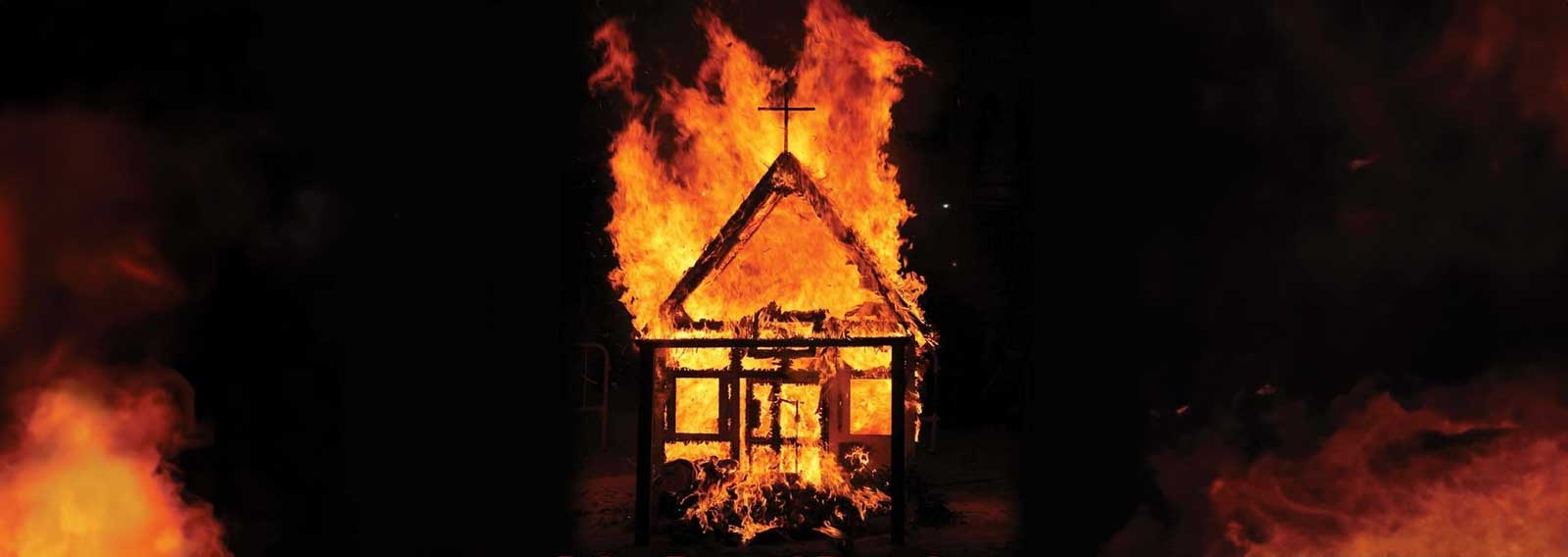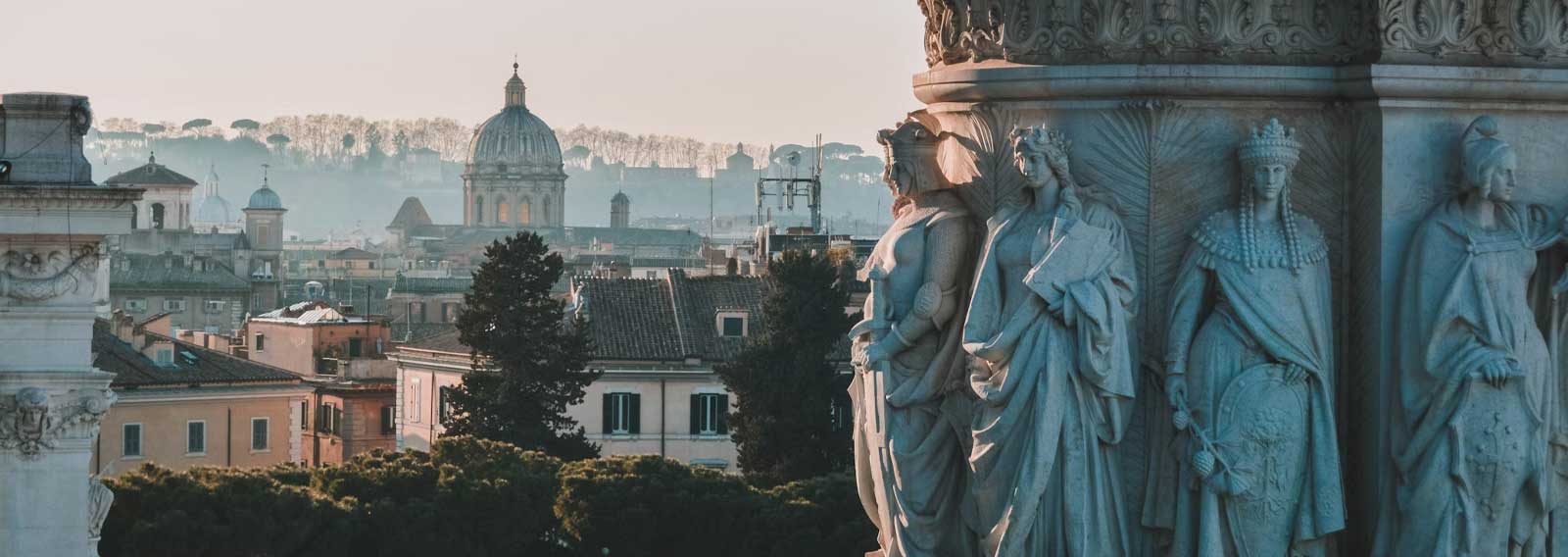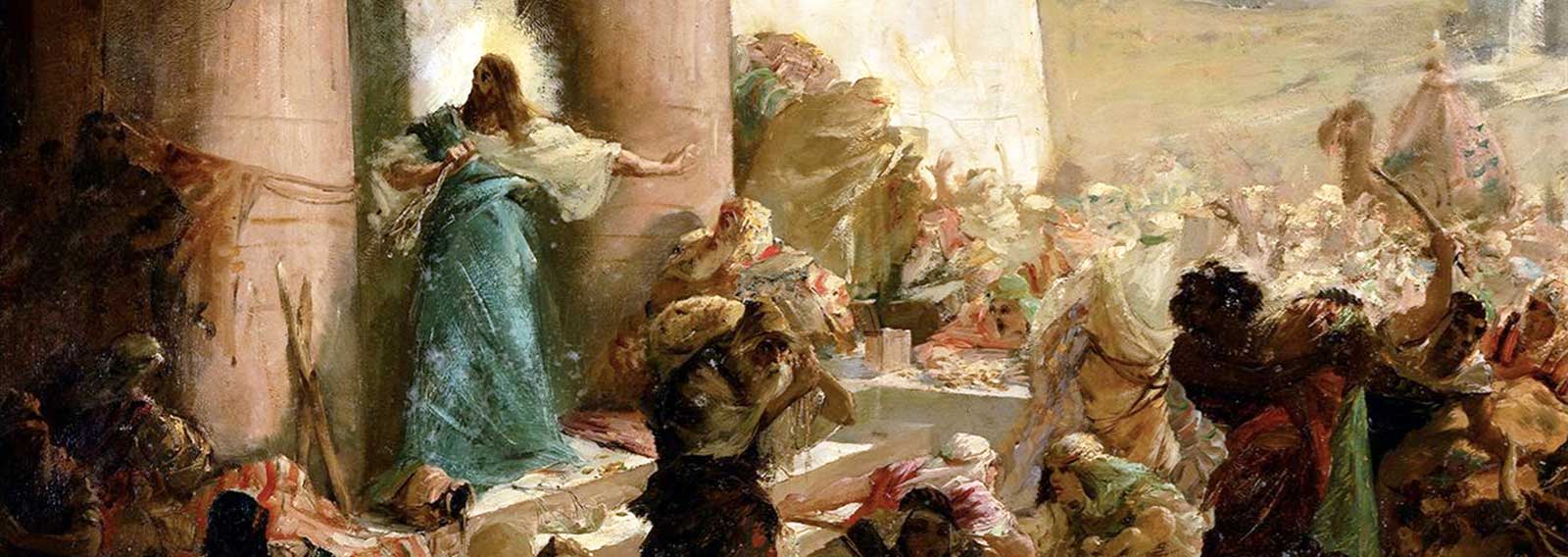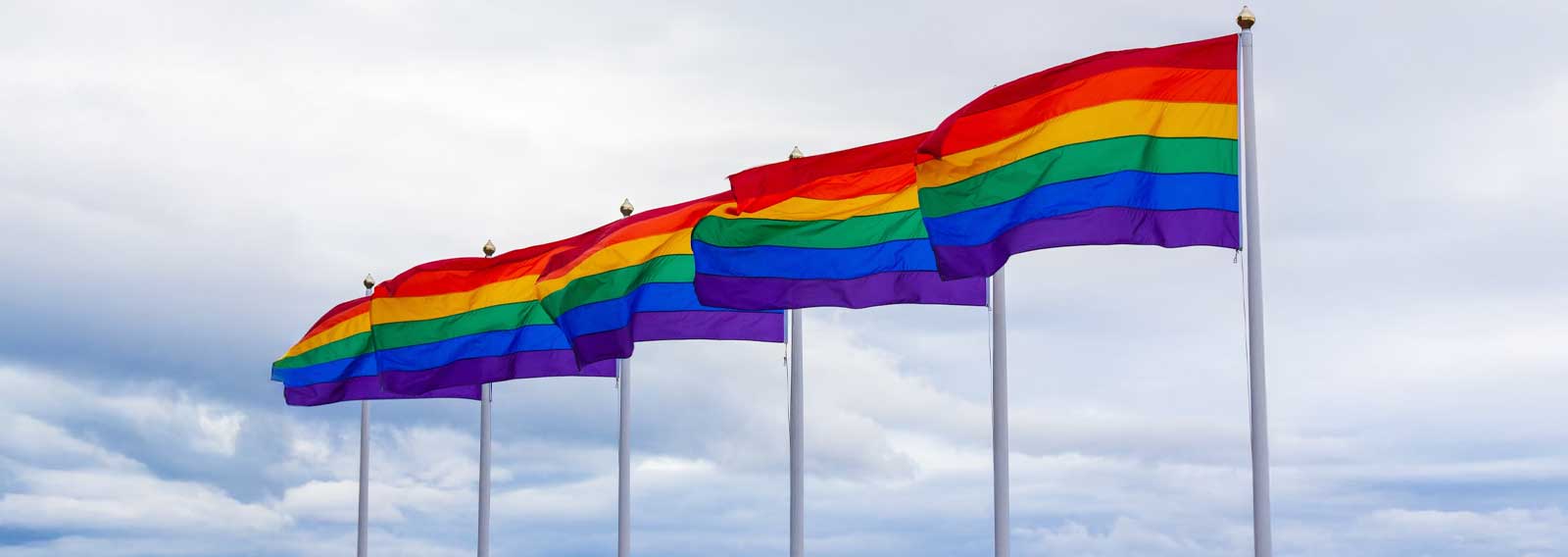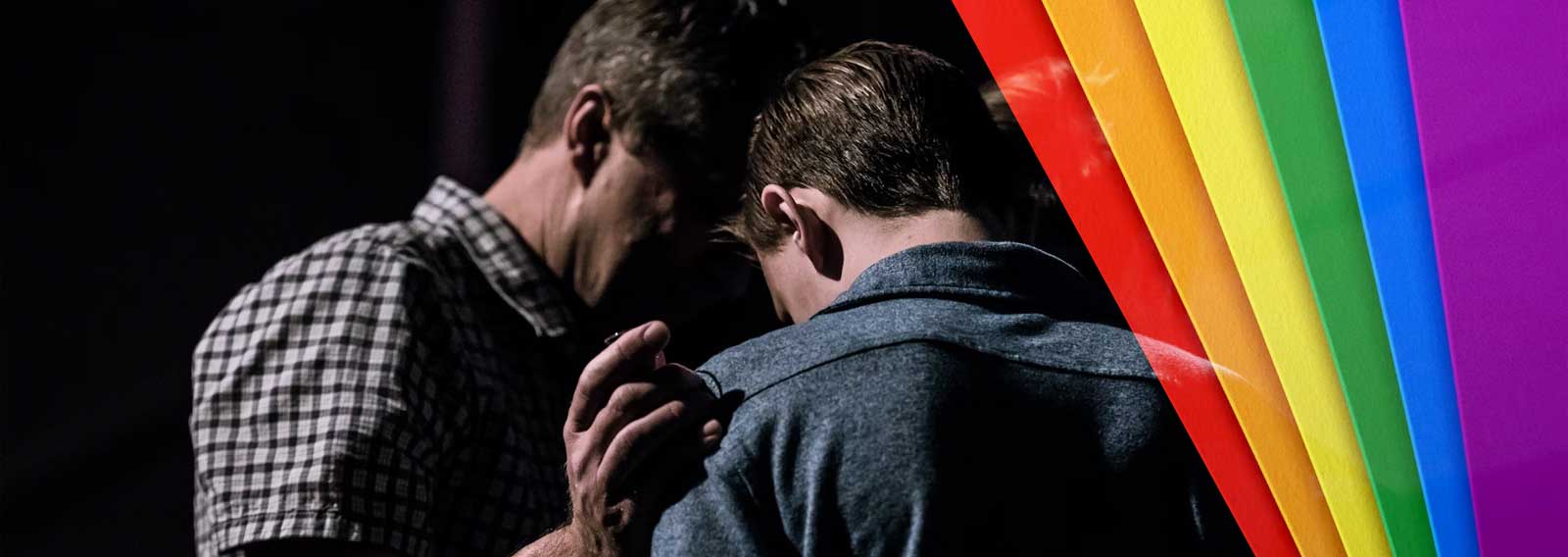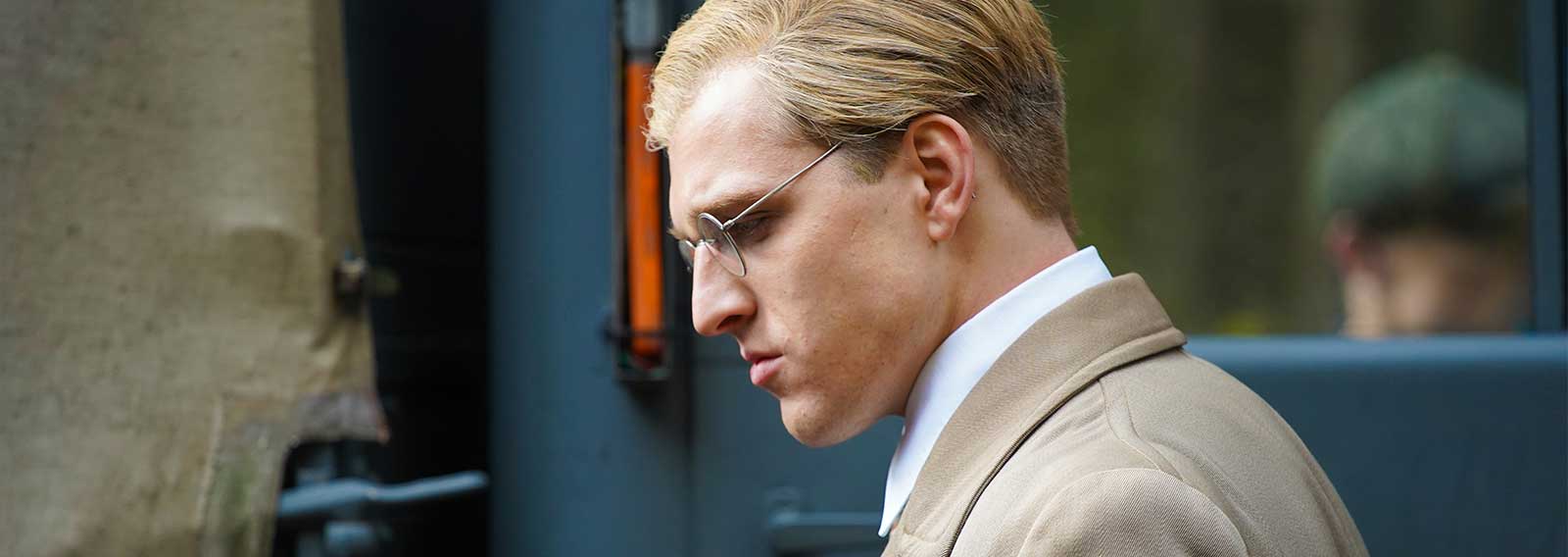Many Christian observers of the West have noted for quite some time now that we are seeing a real reversal. The paganism of two millennia ago was basically wiped out by the spread of Christianity. Sure, it took some centuries to happen, but it took place nonetheless. However, the West is now quickly reverting back to what was the norm twenty centuries ago.
There is no question that we have moved from being a Christian West, to a post-Christian West, and now an anti-Christian or pagan West. While Christianity is thriving and growing in much of the non-Western world, here in the West it seems to be on its last legs.
Plenty of books have appeared of late making this case. One of the most recent is Pagan America: The Decline of Christianity and the Dark Age to Come, by John Daniel Davidson. Those who have been following these matters over the years will find much familiar material here. But when your country is going down the tubes, we need to keep speaking about it in the hopes of turning things around.
His first paragraph clearly lays out what the book is all about:
The argument of this book is straightforward. America was founded not just on certain ideals but on a certain kind of people, a predominantly Christian people, and it depends for its survival on their moral virtue, without which the entire experiment in self-government will unravel. As Christianity fades in America, so too will our system of government, our civil society, and all our rights and freedoms. Without a national culture shaped by the Christian faith, without a majority consensus in favor of traditional Christian morality, America as we know it will come to an end. Instead of free citizens in a republic, we will be slaves in a pagan empire. (xiii)
Of course trying to live on borrowed spiritual capital can only last for so long. The more the Christian roots of America and the West are attacked and removed, the less the benefits of the faith will last. What we are seeing now is clear proof of this reality.
As such, the usual examples are presented here, be it the culture of death, the radical sexual revolution, the war on the family, and the rise of the transhumanist future. It all makes for scary reading, but we can no longer keep our heads buried in the sand. We either face this crisis head on, or we will lose it all real soon.
Trans madness is of course a major problem in America and the West, and is as good an indicator as any of the rapid decline and deterioration we see all around us. A few quotes from Davidson:
Every major medical institution in the United States now subscribes to the theory that children can meaningfully consent to irreversible medical treatments that involve castration, sterilization, and the removal of healthy organs and body parts—all in the name of “affirming” their identity as a member of the opposite sex. What’s more, these institutions and the doctors and administrators who run them have concluded that these kinds of treatments and procedures are not just beneficial but necessary for the well-being of the patient. Sometimes they do so over and against the wishes of parents. The so-called “affirmative model,” in which medical professionals accept the expressed “gender identity” of the patient and his or her desire to transition, has replaced the once-standard process of clinical assessment and diagnosis. (p. 200)
And again:
Fifteen years ago, there were zero pediatric transgender care clinics in the United States. Today there are more than a hundred. An entire medical industry—and a lucrative one, since patients who undergo costly transitions will be patients for the rest of their lives—has sprung up over the last decade, doling out powerful prescription drug regimens and performing irreversible surgeries while raking in profits from insurance companies. And make no mistake, the profit motive is nothing to dismiss lightly. In 2016, the Obama administration prohibited health insurers and medical providers from denying care based on gender identity, prompting health insurers to begin covering more treatments that fall under the category of “gender-affirming care.” Today more than half the states cover gender transition as part of their Medicaid programs, which serve low-income families and are funded with taxpayer dollars. As private and public insurance coverage has expanded, more providers have begun offering their services. And no wonder: the profits on the table are considerable. A year-long regimen of puberty-blockers alone can cost tens of thousands of dollars. All of this has been endorsed and promoted by the medical establishment. (p. 201)
We are reminded how fully in bed the Democratic Party in the US is with all this. And with ‘Tampon Tim’ Walz parading around the stage at the Chicago Democratic National Convention as I type this, it all hits home so much more.
But it does not stop there. If the magical word “consent” can cover allowing children to have body parts lopped off at will, then it can cover a multitude of other sins. So the issue of pedophilia is also examined closely by Davidson. He writes:
This is not to conflate transgenderism with pedophilia, but only to point out that if we cannot stop the normalization of “gender-affirming care” for children, then we will not be able stop the normalization of “love knows no age” pedophilia. If we can find no common ground as a society to stop the castration, mutilation, and sterilization of minors because the minors in question have consented to these things, then we will find no common ground to stop pedophilia from pedophilia from gaining status as a legitimate sexual orientation, no better or worse than any other. (p. 221)
Another clear indication of growing neopaganism in America is the rise and rise of witchcraft, satanism and related activities among young people. Says Davidson, “In the span of a generation, straightforward expressions of neopaganism in America have gone from quirky, countercultural oddities to ordinary and almost mundane features of mainstream national culture.” (p. 127)
It is fast becoming the go-to counterculture religion of so many:
Postmodern witchcraft, then, is in one sense a kind of secular substitute for organized religion, and specifically for the Christian faith. With its focus on self-empowerment, self-care, and identity politics, you might even call it neopaganism for the “nones.” It is easy to see the appeal of all this to young people in a post-Christian society, to understand it not just as a coping mechanism for the vicissitudes and alienation of modern life but also as a substitute for the community, identity, and connection to something larger and transcendent— all of which Christianity once provided. At the same time, it flatters the young practitioner, confirms her in her preferred identity, marks her as a rebel and nonconformist, makes no demands, censures nothing, judges nothing. It is in many ways the perfect “religion” for the post-Christian era. (pp. 135-136)
As is so often said, just as nature abhors a vacuum, so does the spiritual realm. The erosion and rejection of Christianity does not leave us religion-less – we simply get new (or not so new) false religions rushing in to take its place.
And just as Christianity has its rituals and practices, so too do the new pagan cults. Chief among them are the satanic sacraments of abortion and euthanasia. The new replacements of Christianity are far from neutral and harmless. They fully affirm and embrace the culture of death.
With words like “consent” becoming holy words in the new paganism, words like “autonomy” are as well. ‘My body, my choice’ they claim. But of course, the baby temporarily living within his or her mother is not the body of the woman. And with huge problems today concerning youth suicide, promoting euthanasia as the solution for all our problems only makes matters worse.
And it is not just in America where this death cult reigns supreme. Davidson spends a fair amount of time examining places like Canada, Belgium and Holland as well. It is clear that Europe is even further along this path of de-Christianisation and the rejection of life.
Again, to refer to the DNC now taking place, the sacrament of abortion has been the most discussed topic there – followed only by a few million references to Trump. Modern-day Democrats are the most paganised, pro-death, and anti-Christian party in the US. It all goes together. Says Davidson:
Abortion, among leftists in the post-Christian West, inspires a cult-like devotion. Today, infants are not sacrificed on the altars of Moloch and Baal, but on the altar of individual will and power, which is the basis of paganism. The idea that abortion is a positive good is an endorsement of the ancient pagan practice of child sacrifice. In the West, the Christian moral universe is giving way to the moral universe of the Aztecs and the Canaanites. In America, this has happened rather rapidly. In just a few decades, abortion has gone from being an unfortunate and shameful practice (even if legal) to a symbol of female empowerment and personal liberation to be celebrated. The only thing that stands against it now is the remnant of Christian feeling still alive in some parts of the country. (p. 173)
As he concludes his book, he presents no rosy pictures. In many ways the future looks bleak. Indeed, he says the same thing I have been saying for many years now: things will get worse before they get better. Thus we need to look to the long term.
Our problems will not be solved overnight. Just as it took centuries to overturn the first batch of paganism two millennia go, it will take time to deal with the current batch. But it can happen. He writes:
That said, no matter what the immediate fate of the country might be, we are duty bound to take action that offers the hope that someday the American republic can be restored under its original Christian aegis. I stress someday, because we need to be realistic. The recovery of Christianity as the basis for civic life in America is not something that will happen in the lifetime of anyone alive today. But we can perhaps begin to lay the foundation, right now, of a future, free American republic and the revival of Christian moral virtue that it will require. If Christians are to be a persecuted minority in America, then let them be a loud and unflinching minority, boldly proclaiming their faith in public, taking what ground they can, and ready to suffer the consequences. For too long Christians in America have kept their faith largely private, a matter of attending church on Sunday and taking on a few minor obligations to pray at home or volunteer for charities. For many Christians, the threat of persecution will mean the end of an already tenuous faith. For many others, it will justify making their faith even more private. The temptation will be to retreat, to adopt quietism. (p. 280)
He continues:
But we are called to fight, and die if we must. In the words of Boniface, who was himself murdered, cut down by a pagan raider, “Let us continue the fight on the day of the lord. The days of anguish and of tribulation have overtaken us; If God so wills, let us die for the holy laws of our fathers, so that we may deserve to obtain an inherent eternal inheritance with them. Let us be neither dogs that do not bark nor silent onlookers nor paid servants who run away before the wolf. Instead let us be careful shepherds watching over Christ’s flock.” We need barking dogs and shepherds now more than ever. The wolves are coming. (p. 299)
As mentioned several times already, it has been quite timely to read and review this book while the DNC was taking place in Chicago this week. What we have seen there fully encapsulates the de-Christianisation and re-paganisation of the West. Without a major turnaround, there may not be a West left for much longer.


